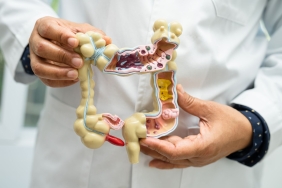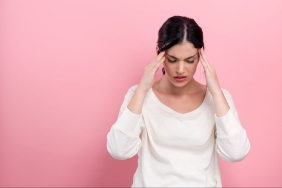Severe pain during menstruation is a common condition experienced by many women. In the medical literature, this condition is called "dysmenorrhea". Dysmenorrhea is a painful condition experienced by women during their reproductive years (after menarche) and when they have regular menstrual periods. Pain can range from mild discomfort to severe pain and can sometimes negatively impact daily living activities.

Severe Pain During Menstruation: Dysmenorrhea
1. Primary and Secondary Dysmenorrhea:
Dysmenorrhea is divided into two main categories: primary dysmenorrhea and secondary dysmenorrhea.
- Primary Dysmenorrhea: Bu, adet döneminin başlangıcında veya hemen öncesinde ortaya çıkan düzenli kramp tarzındaki ağrılardır. Genellikle ergenlik döneminde veya genç yetişkinlikte başlar ve kadınların yaklaşık %50’sinde görülür. Ağrılar genellikle adet döneminin ilk 1-2 günü en yoğun düzeydedir ve daha sonra azalır.
- Secondary Dysmenorrhea: This type of dysmenorrhea usually begins later (after age 20) and can be more severe. In addition to pain during menstruation, it may be accompanied by other symptoms resulting from an underlying medical condition. Secondary dysmenorrhea may be caused by another problem in the uterus, ovaries, cervix, or pelvic area, such as endometriosis, pelvic inflammatory disease, or fibroids.
2. Causes of Dysmenorrhea:
The main cause of dysmenorrhea is excessive contraction of the muscles caused by chemical signals released from the lining of the uterus (endometrium) towards the muscular layer of the uterus (myometrium). This condition causes the lining of the uterus to shed and triggers what is known as menstrual bleeding. These contractions and low oxygen levels cause pain.
Although the cause of primary dysmenorrhea is not fully understood, it is thought to be related to the increase in prostaglandins in the inner layer of the uterus. Prostaglandins are chemical compounds that tighten muscles and increase inflammation.
Because secondary dysmenorrhea is caused by an underlying medical condition, the causes may vary and should be evaluated by a specialist.
3. Dysmenorrhea Symptoms:
Dysmenorrhea can cause different levels of pain in women. Symptoms may include:
- Severe cramp-like pain
- Back and leg pains
- headaches
- Nausea and vomiting
- Diarrhea
- Fatigue and weakness
- dizziness
4. Dysmenorrhea Treatment:
Home remedies for primary dysmenorrhea include:
- Application of a hot water bottle or hot towel
- doing light exercises
- Rest and avoid stress
- Using painkillers (such as aspirin or ibuprofen)
However, in case of severe pain and secondary dysmenorrhea, it is important to consult a healthcare professional. The specialist can diagnose the underlying medical condition and recommend appropriate treatment. Treatment may include hormonal medications, birth control pills, intrauterine devices, or surgical procedures.
5. Preventive Approaches:
The following measures may be recommended to prevent dysmenorrhea or relieve symptoms:
- exercising regularly
- Following a healthy and balanced diet
- stay away from stress
- Not smoking and limiting alcohol consumption
6. Alternative Treatment Methods:
In addition to traditional medicine methods for the treatment of dysmenorrhea, some women may prefer to resort to alternative treatment methods. However, since there is limited information about the effectiveness of these methods, they should not be implemented without consulting a healthcare professional. Some common alternative treatments include:
- Acupuncture: Some women have found benefit from receiving acupuncture sessions to relieve menstrual pain. However, the effectiveness of acupuncture may vary from person to person.
- Herbal Supplements: Nutritional supplements, especially magnesium, omega-3 fatty acids, and vitamin B6, may help relieve symptoms of dysmenorrhea. However, it is important to consult an expert regarding the dosage and use of these supplements.
- Herbal Teas: Some herbal teas can help relax and relieve pain. For example, teas from herbs such as chamomile, lemon balm, and fennel can help you relax. However, it is important to consult a specialist before drinking these teas regularly.
7. Taking Care of Women's Health:
Although it is normal to experience severe pain during menstruation, in some cases it may be a symptom of a serious underlying health problem. Therefore, it is important to go for regular women's health check-ups. Your doctor will work with you to determine the cause of the pain and plan the right treatment.
Women's health is vitally important, and healthy lifestyle habits and regular health check-ups are important to detect potential health problems early. Additionally, healthy lifestyle choices, such as methods to help relax during menstruation, exercise, good nutrition, and avoiding stress, can also help relieve symptoms of dysmenorrhea.
Severe pain during menstruation is a common condition known as dysmenorrhea. Primary dysmenorrhea is seen in half of young women and occurs due to excessive contractions of the uterine muscles. Secondary dysmenorrhea is associated with underlying medical problems. Dysmenorrhea symptoms can negatively impact women's quality of life, but relief is possible with the right treatment and lifestyle changes. If symptoms of dysmenorrhea are seriously affecting you in your daily life, it is important to seek help from a healthcare professional.
Resources:
- American College of Obstetricians and Gynecologists. (2015). Dysmenorrhea: Painful Periods. https://www.acog.org/womens-health/faqs/dysmenorrhea-painful-periods
- Mayo Clinic. (2021). Menstrual cramps (dysmenorrhea). https://www.mayoclinic.org/diseases-conditions/menstrual-cramps/symptoms-causes/syc-20374938
- Women's Health Concern. (2021). Period Pain (Dysmenorrhoea). https://www.womens-health-concern.org/help-and-advice/factsheets/period-pain-dysmenorrhoea/

















